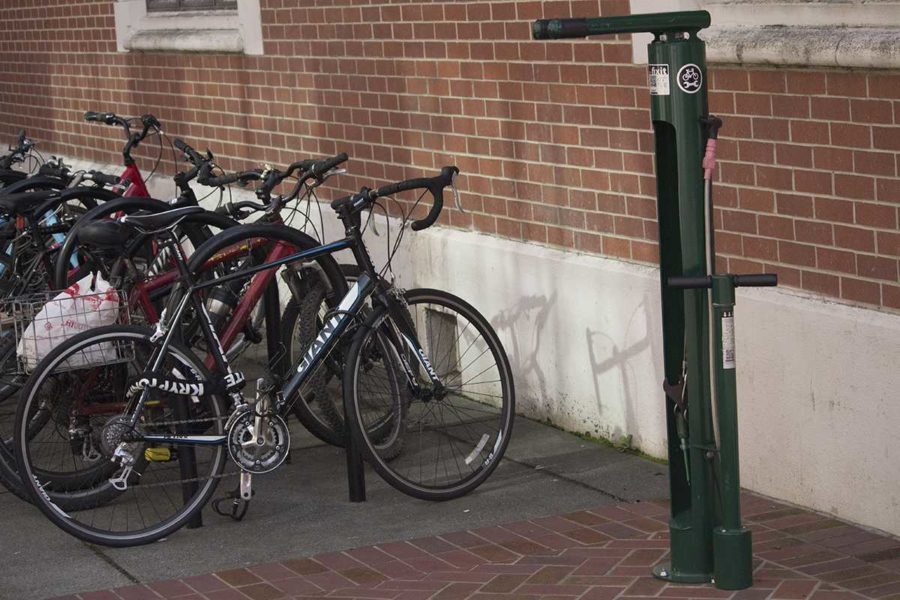As global levels of greenhouse gases skyrocket, those aware of the issue question their own personal carbon footprints and search for other viable, long-term options.
Amy Jolly, of Santa Rosa’s Center for Climate Protection, addressed the issue of rising GHGs in her Jan. 28 presentation, “Transportation and Sustainability,” at Santa Rosa Junior College’s Bertolini Center for Student Leadership.
“If everybody in this room decided to walk or ride their bike to school or to work or those short trips one day a week we could save about 1.5 tons of CO2 in a year, and these numbers keep growing,” Jolly said to the room of about 20. “What if all the students in the JC decided to do this? What if all the students in Sonoma County decided to do this? What if all the students or all of us in the U.S. decided to do this? All of a sudden our small and insignificant seeming act is powerful and impactful.”
Jolly began by asking attendees to take a moment to think about how they got here. For most it was simple; they hopped in a car and drove.
For those without a car, either due to their economic situation or, as Jolly put it, “a conscientious lifestyle choice,” it is another question entirely.
For some students, commuting to school means riding their bike through the rain, or waking up early to catch the bus, which is often late. Those who do this by choice do so knowing that they are drastically reducing their carbon footprint.
In 2011, Sonoma County CO2 emissions totaled 4.2 million tons, a 14 percent decline since 2008. Even so, 60 percent of 2011’s emissions were still due to transportation, only a 2 percent drop, according to the Sonoma County Greenhouse Gas Report.
“We have to address the issue of transportation,” Jolly said. There are two primary transportation strategies students can use to reduce their CO2 carbon footprint. The first is “mode shift,” changing the kind of transportation one uses to active transportation or public transit. The other is “fuel shift,” switching the cars they drive from combustion engine vehicles to electric vehicles.
Jolly’s evidence showed people riding their bikes or the bus instead of driving a “single-occupancy-vehicle” are largely decreasing their emissions by doing so, whether intentional or not.
Daniela Lopera, an SRJC international student from Columbia, said, “I use my bike and the Sonoma County Transit because they are sustainable and I have free access to them. This is also because I don’t have a car, but it is a way to move freely. I ride every day if I can, even if it is raining.”
Lopera has a current student I.D., meaning she can use Sonoma County Transit for free.
Joey Franceshi, CyBear Center employee, said if students are currently enrolled in classes this semester they can get a validation sticker in the CyBear Center. With this sticker, Sonoma County Transit is free.
Lopera said, “We have a lot of parking lots and they are all full,” and suspected only about 25 percent of students bike or ride the bus to school.
In 2010, 2,747 teens died in motor vehicle accidents, while bicycle injuries only accounted for 63, Jolly said. “The risks of a sedentary lifestyle far outweigh the risks of being in a bike or pedestrian collision.”
Jolly questioned how we get out of our single occupancy vehicles and begin reducing our carbon footprint. She left participants with “three to-dos” on how to start this process.
1. Start with self. “Start thinking about ways you can travel that are healthier for you and the planet,” Jolly said.
2. Engage with your community. “Community can make the needed changes not just possible but easy,” Jolly said.
3. Dream big. “We need you to do things that quite frankly, we haven’t thought of yet,” she said. Jolly encourages this generation to have big ideas and not be afraid to go after them.



Darweezy • Feb 8, 2016 at 7:39 pm
Trains! But I think I speak for everyone when I say. Jet pack. 😉